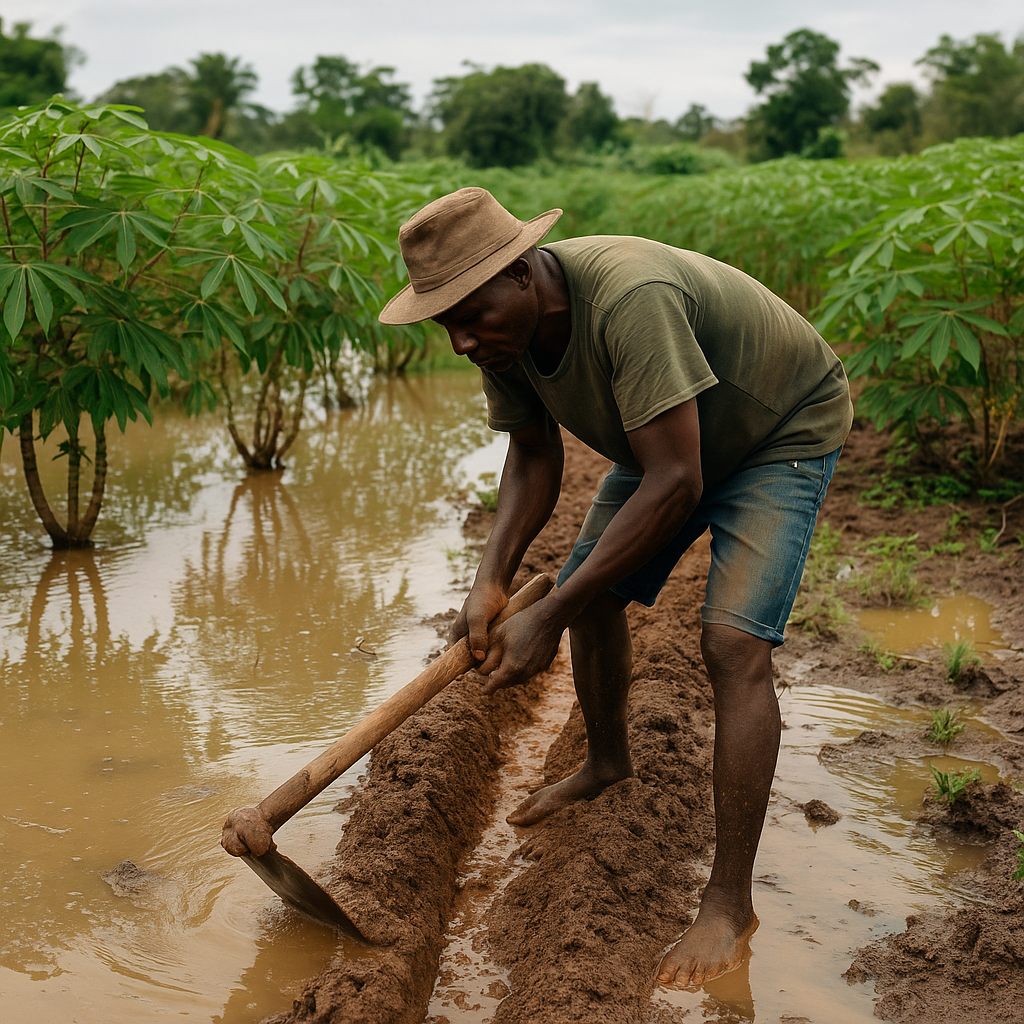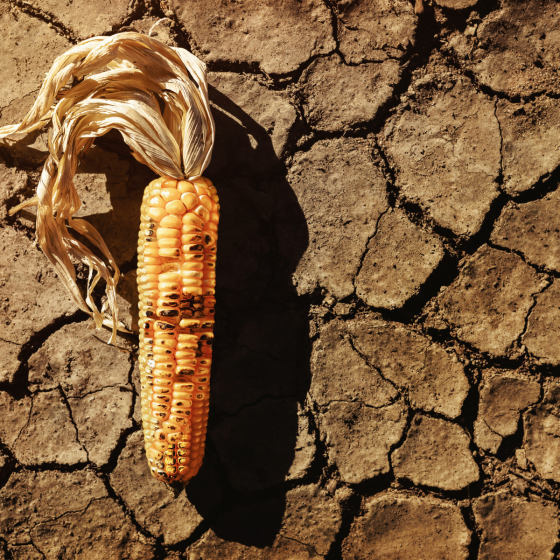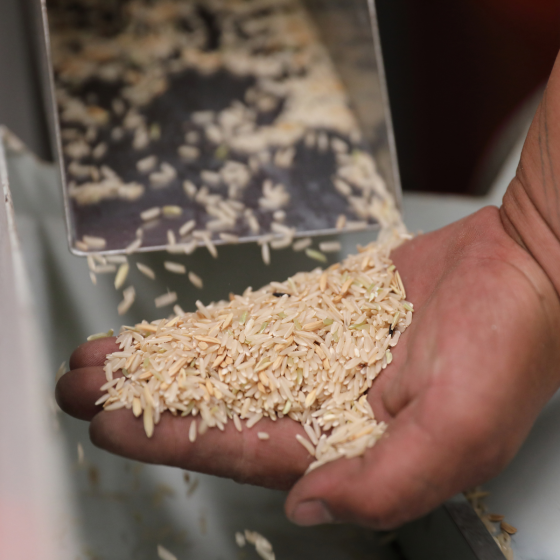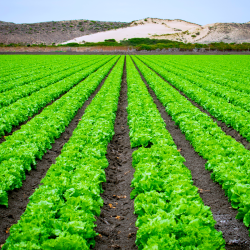Nigeria’s rainy season, typically spanning from April to October, ushers in a period of abundant rainfall, vital for the nation’s predominantly rain-fed agriculture. However, this blessing often comes with a significant challenge: the risk of flooding, waterlogging, and severe soil erosion. These issues pose an existential threat to crop yields for both small-scale and commercial farmers across the country. Given that agriculture employs over 60% of Nigeria’s population and is a crucial contributor to its GDP, mastering effective water management during this season is not just about maximizing productivity; it is about safeguarding livelihoods and ensuring national food security. This article aims to provide practical, scalable solutions for managing excess water, encompassing both traditional and advanced techniques in drainage and irrigation. Our objective is to equip Nigerian farmers with actionable strategies tailored to Nigeria’s unique climatic, soil, and socio-economic conditions, while drawing inspiration from global best practices. The scope covers the specific needs of small-scale farmers, often constrained by limited resources and small plot sizes, as well as commercial farmers, who contend with larger operations and capital access, emphasizing affordability, sustainability, and resilience in the face of increasing climate variability.
Understanding Nigeria’s Rainy Season Challenges
Nigeria’s climate dictates diverse rainfall patterns. The southern regions typically experience heavy and prolonged rains, receiving between 800 mm and 2000 mm annually. In contrast, the northern parts endure shorter, more intense rainy periods, ranging from 500 mm to 1000 mm. Compounding this natural variability is the increasing unpredictability brought by climate change, leading to more frequent and severe floods alongside sudden, prolonged dry spells, often within the same rainy season. The Nigerian Meteorological Agency (NiMet) annually issues its Seasonal Climate Prediction (SCP) to fulfill its mandate of providing weather and climate guidance to the Nigerian government and public. This report forecasts annual climatic variables like rainfall and temperature. NiMet generates these forecasts using advanced tools and current scientific understanding. The SCP document offers crucial information for policy development, planning, and decision-making for both public and private sector entities, including individuals, farmers, operators, and stakeholders. These forecasts are especially beneficial for sectors sensitive to weather, such as agriculture, aviation, construction, water resources, health, trade, and tourism. Additionally, NiMet’s ICT team developed an in-house digital SCP app, which is user-friendly, dynamic, and highly interactive. The predicted 2025 annual rainfall is anticipated to be normal to below-normal rainfall in most parts of Nigeria compared to the long-term average. Parts of Kebbi, Kaduna, Ebonyi, Cross River, Lagos Abia, Akwa Ibom states, and the FCT are expected to have above-normal annual rainfall amounts. High intensity rainfall is expected in May-June that may likely result in flash floods in the coastal cities.
These climatic patterns have profound impacts on crops – through waterlogging/flooding of farmlands, soil erosion and excess moisture:
- Waterlogging: Waterlogging is a major culprit, severely reducing soil aeration. This lack of oxygen stunts root growth for staple crops like maize, rice (though rice can tolerate controlled flooding, excessive waterlogging is detrimental), and yams, leading to significant yield losses. In 2022, over 676,000 hectares of farmland were damaged by floods, particularly in areas like Emitowa (Niger State), a grain-producing hub. This led to reduced rice, maize, and sorghum yields, threatening food security. Benue, Kogi, and Kwara States (part of Nigeria’s agricultural belt), frequently experience riverine flooding due to overflow from rivers like the Niger and Benue. In 2024, about 40% of farmlands in Maiduguri were submerged due to the overflow of the Alau Dam, severely impacting crop production ahead of the harvest season. This exacerbated food insecurity for over a million people in the region.
Waterlogging has led to significant crop losses, with 2022 floods alone damaging nearly 700,000 hectares of farmland, reducing rice production from 8.4 million to 7.8 million tonnes. This contributes to Nigeria’s food insecurity, with staples like rice, maize, sorghum, cassava, and yams particularly affected, driving up food prices (e.g., cabbage prices in Lagos nearly doubled due to reduced northern supplies). While northern states face more severe waterlogging due to flooding from major rivers and poor infrastructure, southern states like those in the South-South and South-East (e.g., Anambra, Imo) are less affected but still experience waterlogging in riverine and coastal areas during heavy rains.
- Soil erosion: Soil erosion, particularly rampant in hilly areas or poorly managed fields, washes away invaluable topsoil and essential nutrients. This degrades soil fertility, requiring farmers to invest more in fertilizers or face diminishing returns. Soil erosion is a significant environmental challenge in Nigeria, severely impacting farmlands and food production, particularly in regions with specific geological, climatic, and human-induced conditions. The Southeast (Anambra, Enugu, Ebonyi, Abia) is the most impacted due to gully erosion driven by heavy rainfall and poor land management. The Southeast’s heavy rainfall and hilly terrain amplify gully erosion, leading to fragmented farmlands, reduced crop yields (up to 50% in some cases), and increased food insecurity. The region’s role as a food basket makes these losses critical to national food production. Anambra State is one of the most affected, with over 1,000 active erosion sites reported in 2021, described as a major natural disaster. The Nanka gully, one of Nigeria’s largest, is 66 meters deep, 2,900 meters long, and 349 meters wide, consuming farmlands and threatening food production. Farmers report reduced crop yields due to topsoil loss and nutrient depletion, with fertilizers being washed away during heavy rains.
The South-South (Cross River, Niger Delta) faces coastal and water-induced erosion, while Northern states like Gombe suffer from gully and wind erosion. The Southwest, including Lagos and Ogun, experiences less severe but notable erosion. The World Bank estimates that soil erosion contributes to a 0.04% annual GDP loss in Nigeria, with 33.7 million tons of food production lost globally due to erosion. In Nigeria, this exacerbates hunger, with 25 million people at risk in 2023. Nigeria Erosion and Watershed Management Project (NEWMAP) launched in 2012, addressed erosion in 23 states, restoring gullies and promoting sustainable land management, benefiting over 12 million people. However, some sites like Nanka remain unaddressed. These issues reduce crop yields, increase production costs, and threaten food security, requiring urgent action through sustainable practices and policy interventions.
- Excess moisture: Excess moisture creates an ideal breeding ground for various pests and diseases. Fungal infections, for example, become rampant in crops like groundnuts and cassava, leading to widespread crop failure. Waterlogged conditions favor fungal diseases like rice blast, maize smut, and yam anthracnose, as well as bacterial diseases like wilt in vegetables. Reports indicate yield losses of 20–50% in affected areas, with the 2022 floods reducing rice production from 8.4 million to 7.8 million tonnes (U.S. Department of Agriculture, 2022). Stagnant water and waterlogged soils breed pests like armyworms, locusts, nematodes, and whiteflies, damaging crops such as maize, rice, and cassava. This is particularly noted in Niger and Bayelsa, where pest outbreaks follow flooding. Sequel to 2025 Mokwa Flood, farmers in Niger have reported significant losses of staple crops due to flooding and disease outbreaks with these lower crop yields increasing food prices (e.g., rice and maize prices spiked post-2022 and 2025 floods) and exacerbating food insecurity.
Adding to these environmental hurdles are inherent socio-economic constraints:
Small-scale farmers, who form the backbone of Nigeria’s agricultural sector, often lack access to advanced tools, sufficient capital, or the technical knowledge required to implement sophisticated water management systems.
Commercial farmers, while having greater access to resources, face different challenges related to the maintenance of large-scale infrastructure and the need for sustainable water use across extensive operations.
Excess Water Management: Core Principles
According to the NiMet’s 2025 SCP, effective water resources management is crucial for addressing growing water challenges, especially under the pressures of climate change, population growth, and pollution. Rainfall, its availability, usage, and storage are key components of an effective water resource management system. This involves balancing competing demands for water, including drinking water, sanitation, agriculture, energy production, and environmental conservation. Managing excess water is not just about preventing immediate damage; it is a strategic agricultural practice vital for long-term productivity and resilience as it:
- Prevents waterlogging, which can reduce yields by a staggering up to 50% for sensitive crops like maize, by starving roots of oxygen.
- Protects soil structure and fertility by minimizing destructive erosion and the leaching of vital nutrients that are crucial for plant growth.
- Enhances resilience to erratic rainfall patterns caused by climate change, allowing crops to better withstand both deluges and sudden dry spells.
Effective water management during the rainy season hinges on three interconnected strategies:
- Drainage: This involves actively removing surplus water from the field to maintain optimal soil moisture levels conducive to root respiration and healthy plant growth.
- Irrigation: Even during the rainy season, unexpected dry spells can occur. Supplemental irrigation serves as a crucial bridge, supplying water to crops during these critical dry periods to prevent moisture stress.
- Soil Management: Improving soil structure through practices like incorporating organic matter, reduced tillage, and proper crop rotation enhances the soil’s dual capacity to both drain excess water efficiently and retain sufficient moisture for crop needs.
The art of effective water management lies in a delicate balance. Farmers must ensure that drainage efforts do not inadvertently deplete the necessary soil moisture required for optimal crop growth. This is particularly critical for crops like rice, which thrive in controlled, saturated, or even partially flooded conditions, where too much drainage could be detrimental.
Practical Drainage Solutions for Nigerian Farmers
Effective drainage is the first line of defense against waterlogging and erosion. Here are scalable solutions
| Drainage Solutions | Description | Procedures | |
| Small scale farmers | Contour Bunds and Terraces | These involve constructing low-cost earthen or stone barriers along the contours of a slope. They are designed to slow down water runoff, allowing more water to infiltrate the soil and reducing the erosive force of surface flow.
In Mali’s semi-arid regions, similar terrace systems have demonstrably reduced water flow rates, curtailed soil erosion, and even increased aquifer recharge, making them highly adaptable to northern Nigeria’s hilly terrains and intense rainfall patterns |
Farmers can use simple hand tools like hoes to shape bunds or small terraces. Local materials such as stones, compacted earth, or crop residues can be used. Planting resilient grasses like vetiver grass along the bunds is crucial for stabilization, as their deep root systems prevent erosion of the structures themselves. |
| Surface Drains (Open Ditches) | These are shallow, open ditches dug around the perimeter of fields or within them (interceptor drains) to channel excess surface water away from crop roots. | Ditches should be designed with a slight slope to ensure continuous water flow towards natural waterways, existing larger drainage channels, or designated collection ponds. Typical dimensions are 0.3–0.5 meters deep. Regular maintenance, including clearing debris and silt, is vital to prevent clogging and ensure functionality, especially after heavy downpours. | |
| Raised Beds | This involves elevating planting beds (typically 20–30 cm high) above the surrounding field level. This simple technique keeps crop roots above potential waterlogged zones, ensuring better aeration. It’s particularly ideal for vegetables, root crops (like cassava and yams), and groundnuts. | Farmers can use hoes, shovels, or small hand tractors to shape the beds. Incorporating organic matter (compost, manure) into the raised soil improves its structure, further enhancing drainage within the bed while retaining moisture.
|
|
| Commercial farmers | Subsurface Drainage (Tile Drains) | This involves installing perforated PVC or corrugated plastic pipes buried 3–4 feet (approximately 1-1.2 meters) deep below the soil surface. These pipes collect excess water from the soil profile and channel it away, providing deep aeration for crops like maize, soybeans, and wheat that are sensitive to root asphyxiation. | It is crucial to consult agricultural engineers for proper design, considering soil type, topography, and crop water requirements. Pipe spacing typically ranges from 20–80 feet (6-24 meters) depending on the soil’s hydraulic conductivity.
|
| Controlled Drainage Systems | These systems integrate adjustable weirs or water control structures within drainage ditches. This allows farmers to regulate the water table by either retaining water during dry spells (to supplement moisture) or releasing it quickly during heavy rains to prevent flooding.
|
Installation involves placing adjustable gates or boards (weirs) in the main drainage channels. Farmers need to monitor soil water table levels using simple observation wells or more advanced sensors to make informed decisions on when to raise or lower the weir to balance drainage and moisture retention. | |
| Pumping Systems | Deploying pumps to actively remove excess water from low-lying or flood-prone fields. This is particularly effective in areas where gravity drainage is insufficient. As observed in Mali, the adoption of solar-powered pumps offers a sustainable and cost-effective alternative to diesel pumps, reducing operational expenses and environmental impact. | Invest in robust and affordable solar pump systems (e.g., in the range of $500–$1000 for smaller, portable units) to minimize reliance on grid electricity or expensive fossil fuels. Proper sizing and placement are key for efficient water removal. |
Irrigation Strategies for Rainy Season Resilience
While drainage removes excess water, strategic irrigation ensures crops do not suffer from unexpected dry spells, even during the rainy season. This concept, known as “supplemental irrigation,” is crucial for resilience.
Why Irrigate in the Rainy Season?
- Bridging Dry Spells: Nigeria’s rainy season is characterized by periods of heavy rainfall interspersed with unexpected dry spells. These dry periods can critically stress crops at vulnerable growth stages, such as flowering in maize or tuber development in cassava.
- Yield Stabilization & Boost: Supplemental irrigation bridges these rainfall gaps, ensuring continuous water supply. This can significantly boost yields; for instance, supplemental irrigation has been shown to increase wheat yields by up to 29% in Sub-Saharan Africa during critical growth phases.
| Irrigation strategies | Description | Procedures | |
| Small scale farmers | Rainwater Harvesting | This involves collecting and storing rainwater runoff from farm roads, natural slopes, or rooftops in various forms: small ponds, tanks, or cisterns. This stored water serves as a vital reserve for use during dry spells within the rainy season or even into the dry season.
In Kenya’s Nyeri region, farmers successfully increased yields by 3–4 tonnes per hectare for crops like maize and beans by strategically utilizing harvested rainwater. |
Small earth ponds, typically 1–2 meters deep, can be dug on-farm to collect surface runoff. For domestic use or high-value crops, plastic tanks or ferrocement cisterns can be installed. Simple filtration methods like sand or charcoal filters can be used to prevent contamination before application. |
| Manual Irrigation & Low-Cost Drip Kits | This involves applying water directly to crops using basic tools. For vegetables and orchards, low-cost drip irrigation kits (often available for $20–$50) are highly efficient, delivering water precisely to the root zone. | Water should be applied in the early morning or late afternoon to minimize losses due to evaporation. Drip kits, though simple, require careful installation to ensure consistent water delivery. Farmers should be trained on proper installation and basic maintenance (e.g., cleaning emitters). | |
| Commercial farmers | Drip Irrigation | This highly efficient method delivers water directly to the crop roots through a network of tubes and emitters. It significantly reduces water wastage by up to 50% compared to traditional flood irrigation.
|
Installation typically involves a water source, filters, main lines, and lateral lines with emitters. Integrating timers allows for automated watering schedules, and connecting to soil moisture sensors (see Section 6) enables precision irrigation, applying water only when and where needed.
|
| Sprinkler Systems | Sprinkler systems mimic natural rainfall, distributing water uniformly over a large area. They are ideal for crops like rice, maize, and vast vegetable fields. Types range from fixed overhead sprinklers to center pivots. | For optimal uniformity, proper nozzle selection and pressure management are critical. Advanced commercial farmers can explore GPS-guided Variable Rate Irrigation (VRI), which uses GPS data to adjust water application rates across different parts of the field based on soil variability or specific crop needs. | |
| Alternate Wetting and Drying (AWD) for Rice | This is a water-saving irrigation technique specifically for rice cultivation. Instead of continuously flooding rice paddies, AWD involves alternating periods of flooding with periods of drying. This saves water, reduces methane emissions, and can even improve nutrient uptake. | Farmers monitor soil moisture using simple tools like a tensiometer or a perforated PVC pipe (AWD tube) inserted into the soil. Once the water level drops to a certain depth (e.g., 15 cm below the surface in the AWD tube), the field is re-flooded for 2–3 days, and the cycle repeats. |
Advanced Global Techniques and Technologies
Nigeria can leapfrog traditional methods by adopting cutting-edge technologies that improve water management efficiency, particularly with strategic partnerships and capacity building.
| Technology | Global Impact | Application in Nigeria | Procedure |
| Wireless Soil Moisture Sensors (WSMS) – Internet of Things (IoT)-based sensors that continuously monitor and transmit real-time data on soil moisture levels directly from the field. | Widespread adoption has shown to improve water use efficiency by 25–30% for crops like wheat in Zimbabwe, by precisely indicating when and how much to irrigate. | Small-scale farmers can utilize affordable, locally assembled or imported sensors (potentially around $50–$100 per unit) for manual irrigation scheduling, receiving alerts via basic mobile phones.
Commercial farmers can integrate these sensors with automated irrigation systems for hands-off precision watering. |
Requires training farmers on basic ICT literacy and smartphone use. Powering sensors with small solar panels can overcome
Nigeria’s intermittent electricity supply. Partnerships with local tech hubs can lead to localized, affordable solutions. |
| Precision Irrigation Scheduling – combines real-time data from weather stations (rainfall, temperature, humidity), soil moisture sensors, and sophisticated crop models (which predict crop water demand) to generate optimized irrigation schedules | Practices in Israel’s highly productive agriculture demonstrate how such precision significantly reduces water waste while maximizing yields. | Small-scale farmers can access free, weather-based irrigation advice via simple SMS or mobile apps developed by agricultural extension services.
Commercial farmers can adopt decision support systems (DSS) that link to private weather stations or government meteorological data.
|
Requires investment in reliable weather stations and software. Partnership with agricultural extension services is crucial to disseminate tailored, actionable advice to farmers, perhaps through local language apps or community radio programs. |
| Subsurface Drip Irrigation (SDI) – Unlike surface drip irrigation, SDI involves burying drip lines permanently below the soil surface, directly delivering water to the root zone. This significantly reduces evaporation, runoff, and weed growth. | Effectively used in Australia and parts of the Middle East for efficient water use in arid and semi-arid conditions. | Highly suitable for commercial farms growing high-value crops like vegetables, fruits, and even some staple crops in drier northern regions or areas with high evaporation rates. | Requires professional assistance for proper installation to ensure optimal depth and spacing. Regular maintenance, especially flushing filters to prevent clogging from soil particles or roots, is essential for long-term functionality. |
| Smart Drainage Systems – advanced drainage networks equipped with automated weirs, gates, and sensors that respond to real-time rainfall forecasts and soil conditions. They can automatically adjust drainage rates to retain water during dry periods and rapidly release it during anticipated heavy rains. | Fully implemented in countries like the Netherlands, enabling highly optimized water management in complex hydrological systems. | Ideal for commercial farms located in flood-prone areas like the Niger Delta region or large-scale irrigation schemes.
|
Requires significant initial investment and collaboration with specialized tech providers for bespoke solutions. Government subsidies or public-private partnerships could incentivize pilot projects. |
| Geotextile Layers (Water Conservation in Soil) – Permeable synthetic fabrics (geotextiles) can be installed below the topsoil layer to create a barrier that reduces deep percolation losses (water seeping too far down into the soil beyond root reach) and helps retain moisture in the root zone. | Successfully tested for high-value crops like lettuce in dryland agriculture, showing improved water use efficiency.
|
Applicable for both small-scale and commercial farmers, especially in sandy soils with poor water retention or for high-value vegetable cultivation. | Requires labor for installation. Can be done manually for smaller plots. Incorporating it during raised bed construction or trenching is viable. Research into cost-effective, locally sourced permeable materials could make this more accessible.
|






